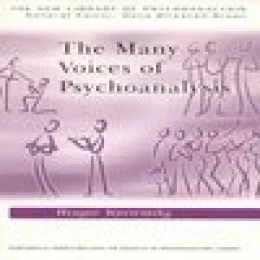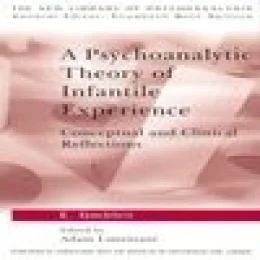Acknowledgements XIII
Part One: The subject
1 An introduction to Matte-Blancos reformulation of the Freudian unconscious and his conceptualization of the internal world hy Eric Rayner and David Tuckett
1 The Freudian unconscious 3
2 A reformulation of the Freudian unconscious 17
3 The internal world 27
2 Bi-logical structures, the unconscious, and the mathematical infinite
Initial panoramic view 43
1 Bi-Iogic and bi-Iogical structures 46
2 Types of bi-logical structure 46
3 A brief remark about therapy 58
4 A retrospective general look at bi-Iogical structures 59
5 Redefinition of the Freudian unconscious: a set of bi-Iogical structures 60
6 Emotion: bi-Iogical structure 62
7 A tool for psychoanalytic and other subjects of knowledge: the three logics 63
8 Mathematical infinite: a Simassi bi-Iogical structure 65
9 The unconscious as infinito sets. The mathematical infinite - a substructure of the logic of the unconscious (but not of rhe unconscious itself!) 68
3 The fundamental antinomy of human beings and world
1 The concept, and three examples of it 70
2 Modes and logics 77
3 Logics, the modes, and the unconscious as realm of the illogical 81
4 The sense-organs and the two modes 82
5 The relation between feeling-emotion and the unconscious 83
6 The logic of the unconscious or bi-Iogic and its relation to emotion, the Freudian unconscious, and the mathematical infinite 84
7 Is the principIe of symmetry the expression of a false- hood; is the unconscious a form of pathology? 85
8 Why is the Freudian unconscious unconscious? 87
9 From bi-Iogic to a unitary super-logic? 92
10 Miscellaneous thoughts about the two modes of being 92
11 Thinking, imagining, feeling, being. and discovery or invention 96
Part Two: Projection, introjection, and internal world
4 Freuds concept of projection in the light of the three logics
1 The initial ideas: the Fliess papers 103
2 The case of Schreber 106
3 Freuds subsequent writings on projection 118
5 Identification and projection
1 Melanie Kleins and Elliott jaquess comments on Freud 120
2 Confrontation with a quotation from Freud 121
6 The notion of internal world: problems and hopes
1 Internal-external: why? 124
2 What is internal and what is external? 127
3 Some pertinent definitions 128
4 The challenge of introjection and projection 129
5 Internal world and the unity of the self 133
6 Conclusion 136
7 A perspective on Melanie Kleins contribution
1 A preliminary impression 139
2 The infinite in Kleins writings and in her conception 140
3 Bi-Iogical structures in Kleins writings 143
4 Projective identification: a bi-Iogical structure 146
5 The intertwining of both modes and their relation to Kleins discoveries: bi-modality, order, and grammar 154
6 Order and grammar 160
7 Freud and PI 161
8 Klein and the concept of the unconscious 162
9 Memories in feelings: an unexpected contribution to the solution of an old problem 162
10 Concluding remarks 164
11 Postscript: a personal impression of Melanie Klein 165
Part Three: Projective and introjective processes: a bi-logical point of view
8 Some guiding concepts for understanding clinical reality
1 Normality, pathology, and levels of aggression 169
2 Libido and object-relations theories 171
3 The general functions of defensive processes 172
4 The particular functions of projection and introjection 176
5 The integration of projection and other defence mechanisms 178
6 Ethology, assimilation, introjection and projection 179
7 An important epistemological principIe 182
9 Levels of depth: a working scheme for use in clinical practice
1 Three regions or levels of projection- introjection 184
2 The region of happening 186
3 The region of the basic matrix of introjection and projection 193
4 The region of intermediate levels of introjection and projection 195
10 The fundamental antinomy as seen in clinical examples
1 Pure disavowal-denial-expulsion 201
2 Disavowal-denial and delegation 202
3 Symmetrized vector and Tridim structures. The future of research 204
4 Disavowal mixed with delegation to the ego- ideal 205
5 The relation between repression-denial and levels of awareness (consciousness) 207
6 Disavowal-delegation of plundering 208
7 Almost pure plundering-robbing with a small amount
of denial-delegating 210
8 Plundering reversed into violent getting out 214
9 A reflection on the death instinct 218
10 Some examples of the basic matrix of introjection and projection 219
11 Introjection and projection at intermediate levels 220
12 Disavowal does not necessarily entail a complete severance with the self 223
13 The separation or distance between desire or wish and the object of satisfaction 225
14 The unavoidable dizziness o(deep analysis: dissolution of space-time and of the distinction between subject and object 228
Part Four: Symmetrical frenzy, bi-logical frenzy, and bi-modal frenzy
Prologue to Part Four
Two examples of symmetrical frenzy 233
11 The multiplication of three-dimensional objects
1 An example of bi-logical frenzy 236
2 Discussion 237
3 A geometrical interpretation of the patients internal world 239
4 Internal world, indivisible reality, and infinite 241
5 The bi-logical structures of the material discussed 243
6 A second way of looking at the structure 244
7 General conclusion 244
12 Bi-modal frenzy
1 A case of bi-modal frenzy 245
2 An attempt at understanding 247
3 The insufficiency of present-day conceptions of introjection and projection 249
4 Conclusion 251
13 The upheaval of spatial and temporal structures in the dream world: the spatio-ternporal Multidim structure
1 A dream 252
2 A comment about the contents of the dream 254
3 The contrast between material or external and oneiric, internal reality 255
4 Some conceptual delimitations: types of structure 257
5 The upheaval of spatio-temporal relations observed in this dream 258
6 Freud and dreams 260
7 The spatio-temporal Multidim structure 264
Epilogue to Part Four 269
Part Five: Towards the [uture
14 The notion of object
1 The Freudian concept of object 273
2 The various types of object 276
3 Towards new developments 278
15 Some more mathematical concepts of space, dimension, outside, and inside
1 The concept of space 288
2 Numbers, points, and space 290
3 Dimension 291
4 The concepts of external and internal 298
16 The concept of internal world: past, present, and future
1 Dimensionality of objects and of the internal world 307
2 The spaces of introjection 310
3 The internal world: a retrospective and prospective view 313
Appendix: An account of Melanie Kleins conception of projective identification by Luciana Bon de Matte 319
Bibliography 331
lndex 337






